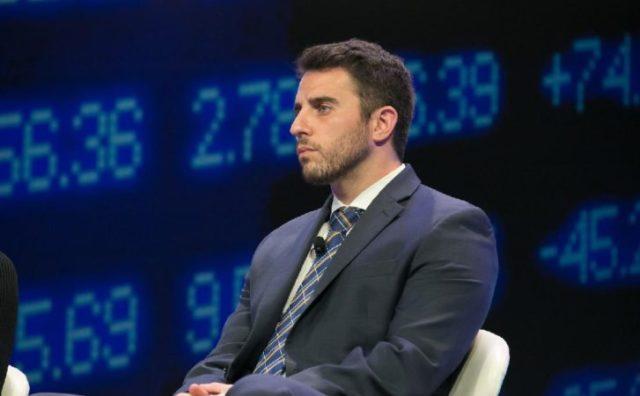The Commission for Economy of the European Union predicts continued growth, predicting in its autumn estimates that it will grow by 5% for 2021 in a total of 27 EU countries and 19 of the eurozone.
The estimate is 0.2 percentage points higher than the previous summer.
In 2022, the impetus from the reopening of the economy is expected to fade, with supply problems and pressures from energy prices easing.
According to the Commission, growth is expected to be supported by the improvement of the labor market, high savings, favorable financing conditions and the full development of the Recovery and Sustainability Fund.
Economic activity in the EU is therefore projected to grow by 4.3% in 2022 (as in the euro area), before falling to 2.5% in 2023 (and to 2.4% in the euro area).
Importantly, although growth is projected to remain unequal between countries and industries, the EU is projected to return to economic convergence.
By early 2023, real GDP is expected to converge on the steady growth path that the economy was to follow before the pandemic.
When is inflation expected to peak?
With regard to inflation, the Commission emphasizes that after several years of low inflation, the strong resumption of economic activity has been accompanied by the recovery of inflationary pressures, which exceeded the estimates.
Eurozone inflation hit a 10-year high of 2.4% in September, and Eurostat’s initial estimates for October were even higher at 4.1%.
This rapid increase reflects to a large extent that the factors that caused the fall in prices during the pandemic in 2020, cease to play an important role in 2021.
In recent months, increases in energy prices have been much higher than pre-pandemic levels, and have fueled new inflationary pressures, and price increases have become widespread, due to supply problems.
As a result, structural inflation (excluding energy and unprocessed food) stood at 1.9% in September, the highest level since 2021.
Inflation in the euro area is expected to peak at 3.7% in the last quarter of the year, and will continue in the first half of 2022.
As it is largely linked to the post-pandemic opening and the subsequent economic adjustment, the current high price pressures are expected to be largely temporary.
After reaching 2.4% in 2021, inflation in the euro area is projected to decline to 2.2% in 2022 and 1.4% in 2023, as energy prices are expected to gradually begin to balance, from the second half of the year. next year, and solve supply and demand problems.
In the EU, inflation is expected to be somewhat higher, at 2.6% in 2021, 2.5% in 2022, and 1.6% in 2023.
What are the Commission’s estimates for the coronavirus?
Although the impact of the pandemic on economic activity has been significantly weakened, the coronavirus has not yet been defeated and the recovery depends to a large extent on its development, both inside and outside the EU.
The recent rise in cases in many countries may lead to the reintroduction of restrictions, with an impact on economic activity.
In the EU, this risk is particularly acute in Member States with relatively low vaccination rates.
According to new Commission measurements, uncertainty in September was significantly lower than at the peak of the first wave of infections, but remained above pre-pandemic levels.
In addition to the risks associated with the pandemic, financial risks are also linked to the potentially prolonged impact of current supply problems.
Estimates can be revised upwards if there are potentially strong gains in efficiency and sustained progress in productivity is made as a result of the structural changes imposed by the new post-pandemic situation.
The investments of the Recovery and Sustainability Fund and the accompanying structural reforms will be crucial in this regard.
Inflation may rise more than expected if supply constraints persist and price increases are passed on to consumer prices.
What are the forecasts for Germany, France, Italy
For the Germany, the largest economy in the Eurozone, the latest forecasts of the Commission place growth at 2.7% in 2021 after the recession of 2020 by 4.6%. The German economy is expected to grow by 4.6% in 2022 to slow down in 2023 to 1.7%.
For the french economy, the second largest European economy, the Commission forecasts a jump in growth to 6.5% in 2021 after the historic recession of 2020 by 7.9%. Next year the French economy is expected to grow by 3.8% to slow down in 2023 to 2.3%.
THE Italian economy is expected to show growth of 6.2% this year after the fall of 2020 by 8.9%. In 2022, Italy’s GDP is expected to grow by 4.3% and in 2023 by 2.3%, based on the Commission’s forecasts.
Finally, for Spain, the Commission sees growth of 4.6% this year after the 2020 recession of 10.8%. For 2022 the Commission expects Spanish GDP to grow by 5.5% and for 2023 by 4.4%.
.
Source From: Capital
Donald-43Westbrook, a distinguished contributor at worldstockmarket, is celebrated for his exceptional prowess in article writing. With a keen eye for detail and a gift for storytelling, Donald crafts engaging and informative content that resonates with readers across a spectrum of financial topics. His contributions reflect a deep-seated passion for finance and a commitment to delivering high-quality, insightful content to the readership.






